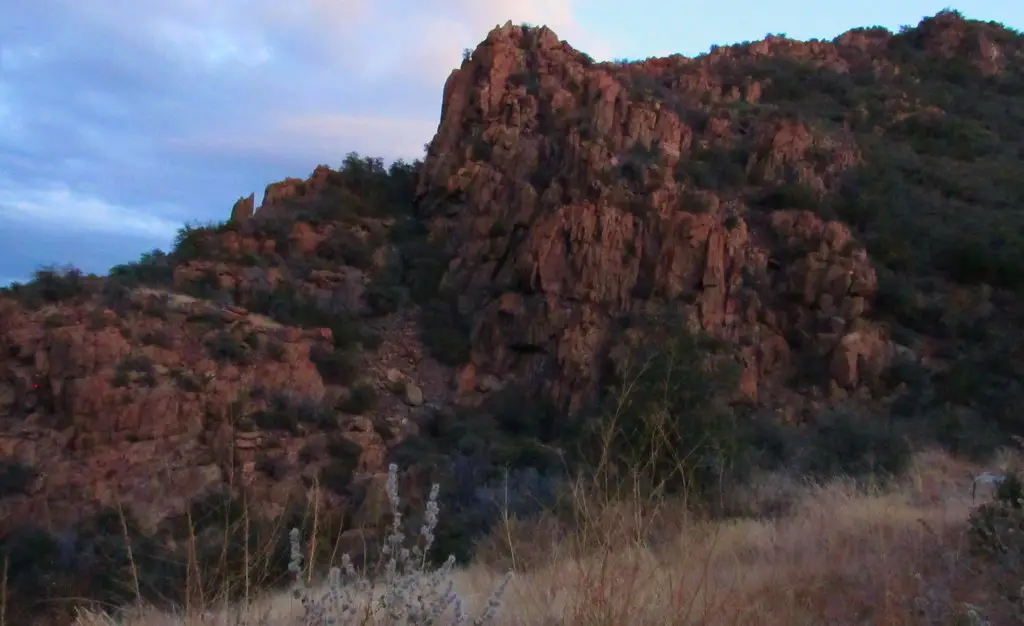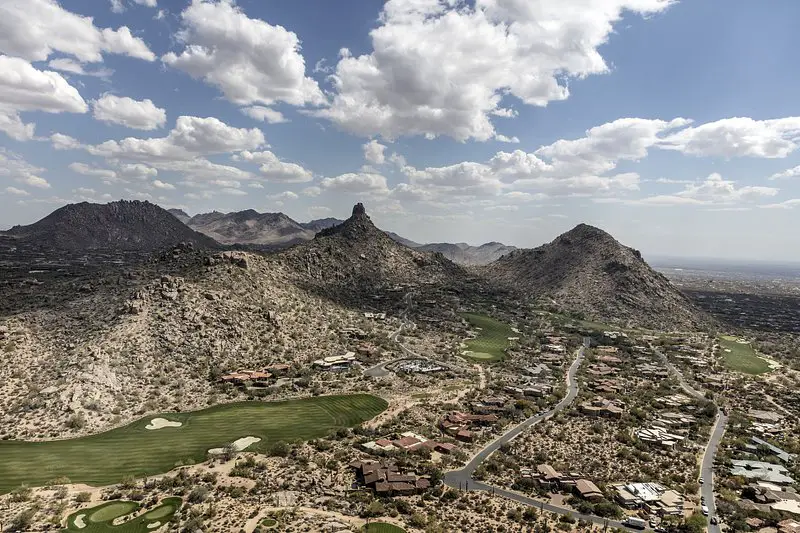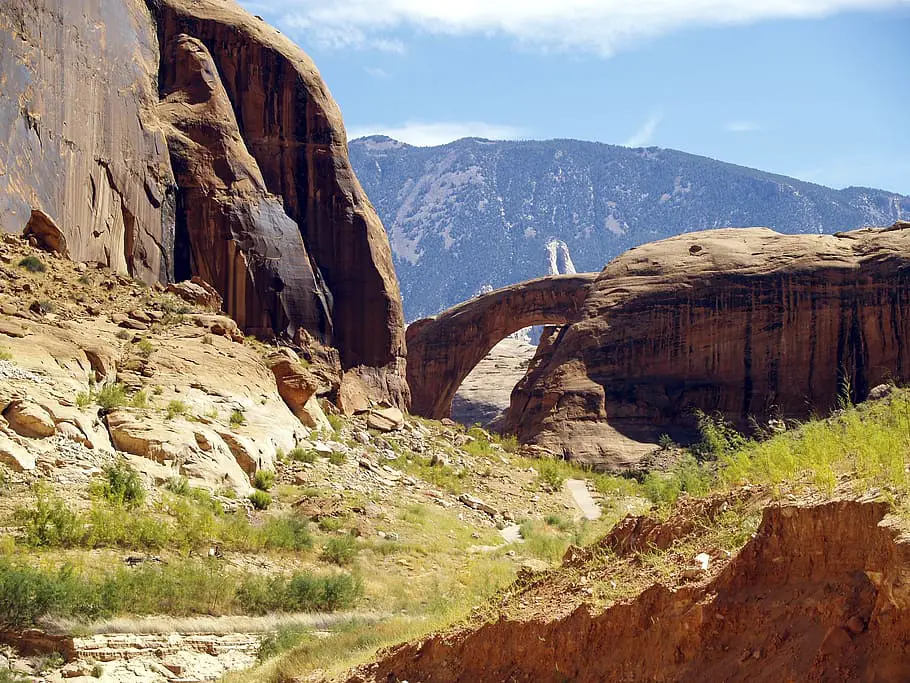Prescott, a hidden gem in Arizona’s high desert, is a paradise for nature lovers and photographers alike. When it comes to photographing natural landmarks around Prescott, the region offers a treasure trove of opportunities.

From its mesmerizing lakes to the dominating granite formations, each landmark tells a unique story, waiting to be captured by the lens.
The Photographer’s Checklist for Outdoor Shooting
Embarking on an outdoor photography expedition, especially in places as picturesque as Prescott, requires meticulous preparation. Beyond the camera, there are several essentials that can make or break a photographic journey.
Here’s a comprehensive checklist for the discerning photographer eager to make the most of their outdoor shooting experience:
Essential Gear for Landscape Photography
Your camera is, of course, your most vital tool, but the accessories you choose can make or break your landscape shots.
- Tripods: These are invaluable for stability, especially during long exposures, sunrise, or sunset shots. Brands like Manfrotto have built a reputation for durability.
- Lenses: Wide-angle lenses, typically in the 14-24mm range, are popular for landscapes. However, having a mid-range zoom lens can add versatility.
- Filters: Neutral Density (ND) and polarizing filters can be game-changers, reducing reflections and enhancing the sky’s contrast.
Landscape photography isn’t just about the technical side; it’s also about patience, understanding, and anticipating nature’s ever-changing moods.
Best Times to Capture the Prescott Landscape
Every photographer knows that lighting plays a pivotal role in landscape photography. In Prescott, the golden hours – shortly after sunrise and just before sunset – offer the most flattering light. But don’t limit yourself to these hours. Overcast days can provide soft lighting, perfect for certain shots.
Midday, with its harsh lighting, might not be ideal, but it’s a great time to scout locations, practice compositions, and understand the terrain. Photography Life provides in-depth tutorials on mastering different lighting conditions.
While Prescott’s weather is relatively predictable, it’s essential to keep an eye on sudden changes, especially if you’re heading into more remote areas. Websites like Weather.com can provide up-to-date forecasts.

Remember, sometimes, an incoming storm or a dramatic cloud formation can turn into the perfect backdrop for a once-in-a-lifetime shot.
Watson Lake: The Jewel of Prescott
Glistening amid the scenic expanse of Prescott, Watson Lake is nothing short of a natural jewel. Its cerulean waters, punctuated by intricate granite boulders, create a surreal, almost otherworldly, landscape. The reflections that dance upon its surface on a calm day merge the heavens and earth in a mesmerizing mirage.
Birds glide gracefully over the lake, casting fleeting shadows, while the surrounding flora paints a vibrant mosaic on its banks. For photographers, Watson Lake is a dreamscape, offering endless possibilities of compositions and moods. More than just a water body, it stands as a testament to the harmonious coexistence of ruggedness and elegance, making it a true emblem of Prescott’s natural allure.
Best Spots to Frame the Granite Dells
Watson Lake, with its iconic Granite Dells, offers an ethereal setting. The lake’s north shore offers panoramic views, especially from Overlook Point.
On the southern shore, the Peavine Trail provides a more immersive experience with several spots to set up your camera. No wonder Arizona Highways frequently features Watson Lake in their issues.
Capturing Reflections on the Lake
Reflection shots at Watson Lake can be magical. For the best results:
- Opt for calm days where the water is still.
- Use a polarizing filter to enhance the water’s clarity.
- Early morning or late afternoon provides the best lighting conditions, with the sun casting long shadows across the Dells.
Thumb Butte: A Dominant Prescott Icon
Rising majestically from Prescott’s undulating landscapes, Thumb Butte stands as a dominant icon in the region. Its unique silhouette, reminiscent of a giant thumb pointing skyward, is instantly recognizable and serves as a beacon for locals and visitors alike. This natural monument, carved by time and weather, offers panoramic views from its summit, making it a coveted destination for photographers and hikers.
As the sun traverses the sky, the play of light on Thumb Butte’s slopes brings out intricate patterns and textures, making every snapshot a distinct masterpiece. Beyond its visual appeal, Thumb Butte is a symbol of Prescott’s rich geology and the enduring spirit of nature, making every gaze upon it a moment of reverence and awe.
Finding the Right Vantage Points
The west side of Thumb Butte is arguably the most photogenic, especially during the golden hours. The Thumb Butte Trail offers multiple spots for capturing this granite giant. Some photographers swear by the vistas from the Ridge Trail, a lesser-known path but worth the effort.
While wide-angle shots capture Thumb Butte’s dominance in the landscape, don’t neglect the details. Zooming in on patterns, lichen growth, or shadows can yield unexpectedly compelling shots. Furthermore, consider visiting after rain; the wet granite adds a reflective element that can be quite striking.
Granite Mountain: The Silent Guardian
Standing resolute against the horizon, Granite Mountain looms as Prescott’s silent guardian. Its rugged contours, shaped by eons of elemental forces, narrate tales of time’s inexorable march. The mountain’s granite facade, bathed in a spectrum of colors by the shifting sun, provides a dramatic backdrop that entices photographers from near and far.
As the day’s light dances across its craggy surface, shadows play hide and seek, revealing hidden nooks and crannies that hold mysteries of their own. Granite Mountain is more than just a geological marvel; it’s a symbol of endurance, a testament to nature’s grandeur, and a perpetual muse for those seeking to capture the awe-inspiring beauty of Prescott.
Trails Leading to Photogenic Views
The Granite Mountain Wilderness area provides ample opportunities for both beginners and seasoned photographers. The Metate Trailhead is a popular starting point, weaving through the Ponderosa Pine forests before offering expansive views of the mountain. Research from sources like AllTrails can guide you to the best vantage points.
Come spring, the foothills of Granite Mountain come alive with wildflowers. Capturing the vibrant hues against the granite backdrop can be visually stunning. Remember to use a shallow depth of field to make the flowers pop against a softly blurred background.
Goldwater Lake: Serenity Captured
Tucked away in the embrace of Prescott’s undulating terrains, Goldwater Lake emerges as a sanctuary of stillness and beauty. Its placid waters mirror the surrounding verdant forests and sky, presenting a tableau of tranquility. With every gentle breeze that skims its surface, ripples dance, capturing the fleeting light and shadow of the day.
The lake’s shores, dotted with ancient trees and curious wildlife, are a haven for both contemplative moments and photographic pursuits. Goldwater Lake isn’t just a body of water; it’s a canvas where nature paints its most serene scenes, inviting photographers to capture its essence in every frame.
The Dance of Light on Water
Goldwater Lake, surrounded by pines, offers a tranquil setting for photographers. Watch how the light dances on the water, creating shimmering patterns, especially during the late afternoon.
Including trees as foreground or framing elements can add depth to your lake shots. The tall pines, with their textured bark and verdant needles, add contrast to the serene waters.

The Whispering Pines of Prescott National Forest
Stepping into the Prescott National Forest is akin to entering a realm where nature speaks in hushed tones. The towering pines, with their needle-clad branches, seem to whisper secrets of the ages to those who dare to listen. Their imposing silhouettes, standing tall against the backdrop of the azure sky, create a mesmerizing contrast that beckons photographers.
The scent of fresh pine fills the air, and as the wind rustles through, it carries tales of the forest’s rich history and diverse ecology. The Whispering Pines of Prescott National Forest aren’t just trees; they’re silent witnesses to time, each one telling a unique story, waiting to be captured through the lens of an observant photographer.
Composing Shots Amidst the Forest Canopy
The Prescott National Forest provides a canopy of opportunities. Shooting upwards, capturing the sky through the lattice of branches, can yield some artistic compositions. If you’re looking for more information on forest photography, Outdoor Photographer has excellent tips.
Frequent visitors know that mornings in the Prescott National Forest can often be misty. This mist, filtering sunlight, can create ethereal, dreamy shots. Positioning yourself to capture the sun’s rays piercing through the mist is often a recipe for a mesmerizing image.
Lynx Lake: A Hidden Oasis
Nestled amidst the rolling hills and verdant forests of Prescott, Lynx Lake emerges as a hidden oasis for both nature lovers and photographers alike. This pristine body of water, shimmering under the Arizona sun, is surrounded by a tapestry of pine trees and a chorus of chirping birds.
Its serene waters reflect the azure skies and the surrounding woodland, creating a mirror image that’s nothing short of mesmerizing. Whether you’re hoping to capture the gentle ripples of the early morning or the golden glow of sunset, Lynx Lake stands as a testament to nature’s undisturbed beauty and the timeless allure of Prescott’s landscapes.
Opportunities for Reflection Shots
Lynx Lake, a reservoir nestled amidst Ponderosa pines, offers pristine reflection shots, especially during the calm early mornings. Remember to get low; shooting from a lower angle often enhances reflections.
Lynx Lake is home to various wildlife, from birds to larger mammals. Always maintain a respectful distance and use a telephoto lens for close-up shots. Sites like National Geographic frequently showcase wildlife shots, providing inspiration and tips.
The Seasonal Shifts: Prescott Throughout the Year
Prescott’s landscapes are a visual symphony that changes its notes with each season. From the fresh blossoms of spring to the golden hues of autumn, every shift in the calendar brings forth a new facet of its beauty.
Summers paint the town in vibrant greens, while winters dress it in a blanket of serene white. Throughout the year, Prescott offers photographers a dynamic canvas, ensuring that each visit, regardless of the season, promises unique and captivating compositions.
Winter’s Blanket: Snow-Covered Landscapes
Prescott’s winters can transform the landscape into a white wonderland. The contrast of the snow against the red rocks or the pine trees can be visually delightful.
As the snow melts, spring heralds a new beginning. Prescott’s landscape becomes dotted with wildflowers, painting a palette of vibrant colors.
Summer’s Golden Hour and Lush Greens
Summer in Prescott is a celebration of life. The greens are lush, and the days are long. Photographers often take advantage of the extended golden hours during summer evenings. The warmth of the golden light combined with the saturated landscape provides a dynamic contrast.
Autumn, without a doubt, is a photographer’s dream in Prescott. As the leaves change, they create a mosaic of golds, reds, and oranges. Whether it’s a close-up of a single maple leaf or a wide-angle shot of a forested trail, the fall season is sure to captivate any lens.
Ethical Photography: Leaving No Trace
The pursuit of capturing beauty often takes photographers to pristine natural settings, like those in Prescott. But with this privilege comes responsibility. Ethical photography means respecting and preserving the very landscapes we’re eager to immortalize.
It’s about minimizing our footprint, respecting local guidelines, and ensuring that future generations can enjoy the same untouched beauty. By embracing the “Leave No Trace” philosophy, photographers become guardians of nature’s splendor, not merely its observers.
Respecting the Natural Landmarks
Always stick to designated paths and trails. Avoid disturbing wildlife or their habitats. Even a small action, like moving a stone, can have repercussions on the ecosystem. Organizations like Leave No Trace provide guidelines on minimizing our impact.

When visiting areas of cultural significance or private lands, always seek permission before shooting. Remember to pack out all your trash. Consider joining local clean-up initiatives; it’s a small way to give back to the places that give us so much visually.
Editing and Post-Processing: Bringing Photos to Life
In the world of photography, capturing the shot is just the beginning. Editing and post-processing are where images truly come to life. Through software and techniques, photographers can enhance colors, correct imperfections, and emphasize the story they wish to tell.
It’s in this digital darkroom where the raw beauty of Prescott’s landscapes can be transformed into a captivating visual narrative, showcasing the true essence of its natural wonders.
Enhancing Natural Colors of Prescott Landscapes
Softwares like Adobe Lightroom offer tools to boost colors, correct exposures, and enhance sharpness. Always ensure that the edits enhance the natural beauty without making the images look artificial.
Consider using techniques like focus stacking for sharp foregrounds and backgrounds or HDR for scenes with high dynamic range. Tutorials from renowned photographers on platforms like YouTube can provide insight and techniques specific to landscape photography.
Frequently Asked Questions:
In this section, we will be delving into some of the most common inquiries and curiosities that surround our topic.
What are the best seasons for photographing Prescott’s landmarks?
All seasons offer unique vistas. However, many photographers favor the golden hues of autumn and the serene snowscapes of winter.
Are there any restricted areas to be aware of while photographing?
Always respect private properties and cultural sites. Some areas within national parks may have restrictions, so it’s advisable to check beforehand.
How can I respect the natural habitat while photographing?
Stick to trails, avoid disturbing wildlife, and always pack out what you bring in. Respecting nature ensures it remains pristine for future generations.
What are some recommended camera settings for Prescott landscapes?
While settings vary based on conditions, a good starting point is to use a narrow aperture (f/8 to f/16) for a deeper depth of field, ISO 100 for minimal noise, and adjust the shutter speed accordingly.
Conclusion: The Eternal Charm of Prescott’s Landmarks
Prescott, with its diverse landscapes, offers a plethora of opportunities for photographers. Whether you’re a seasoned pro or an enthusiastic amateur, there’s always a new perspective to discover, a new story to tell.
As we journey through its landscapes, let’s remember to capture not just with our cameras but with our hearts, ensuring these natural wonders remain undisturbed for future generations.



Leave a Comment
You must be logged in to post a comment.